Improving the goal of science and athletes

To improve performance, elite athletes find support in high-performance centers and technical improvement. In the Basque Country, elite athletes meet at the Fadura Technical Improvement Centre. They perform tests with athletes, they are given medical assistance, they are prescribed certain foods, they are held concentrations, technical conferences, planning and monitoring of training. In short, they deal with the development of athletes to improve their performance.
The ways to achieve this goal can be many. One of them, for example, can be working with elite athletes. In the fadura they have been several. In fact, Xabier Leibar, medical director of the center, says that these people, besides working, also learn. “The best way to analyze sports is to know what that sport is.
And that is sometimes not done directly, but knowing, analyzing and recognizing the characteristics of the sport through its characteristics to the most cutting-edge athletes. We study their workouts, see the analyses, physiological values... Knowing all this, we can use the information with local athletes. They bring elite athletes.”
Importance of small things
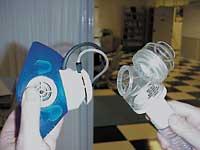
When working on performance, the most important thing is training. But other agents are also very important. Some are surprising and for anyone it would be a smallness, but they can have a great importance in elite sport.
For example, the use of good documentation and information has a great weight. “Today we have to be very attentive to the publications, to the realization of a new test, to the publication of an article... Here we have had a person who makes 100 kilometers. We already knew a project that has begun to be used in the field of food and that has not yet been consolidated, but that could serve for long exercises. That is what we have used with this athlete and has made the second in Europe. The test took place in Italy: it left sea level, climbed up to 800 meters and, completing 100 kilometers, returned to sea level. He made the kilometer in 4 minutes. At that rate the marathon would last 2 hours and 45 minutes, but it has managed to keep that pace for longer.”
Based on this project, they have taught the body to use fat as a metabolic basis. You have been prepared special workouts and special diets for these workouts with different types of fat. At the end of the workouts a diet rich in carbohydrates was applied.
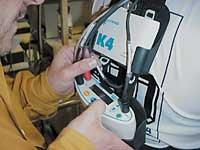
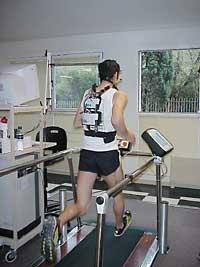
The continuity of food is common in elite sport, especially in competition. Athletes are given diets for the whole week and sometimes they are given through substances that cannot be achieved with food.
Importance of tests
In addition to taking care of the diet, frequent controls are carried out with high-level athletes, tests: stress tests, fitness measures, resistance tests, elasticity tests, analysis of chest capacity fluctuations, speed tests, jump capacity measurements, etc.
The aim of these tests is to measure the impact of training and diet on the athlete. These are tests based on the scientific method. Putting athletes in specific situations, with the help of computers and electronic devices accumulate a lot of information. Doctors stay there for as long as the test lasts, on the one hand because they are responsible for collecting blood samples that should be examined later, and on the other, to help in case of any problems.
Some tests are used to know the athlete better, stress tests. They are made connected to the machines, forming series, gradually increasing the intensity. This type of test draws information about the athlete: location of anaerobic and aerobic level, heart rate, etc. Subsequently, confirmation tests applied to specific limits are also carried out. Finally, training checks are performed to detect possible improvements.
Collaboration with sports federations

The Technical Improvement Centers, in addition to training athletes, carry out research projects. Technicians perform them with the help of doctors.
All projects are carried out between centres and sports federations. First objectives are set with the technicians of the federations. The previous tests are then carried out: level, conditions and conditions of athletes who can go to the center. Work is planned accordingly.
Sometimes federative technicians don't need help training, as they are the ones who do. They only require physiological studies, the extraction of laboratory data and the realization of controls that may be useful for their work, in order to determine whether performance improves or not.
With the Basque canoeing federation, for example, they have such a project. The canoeing teams perform separate training and go to the Fadura to make assessments. They control force values through isocontrols. With a special instrument they measure power, speed, deceleration... over time to know in what circumstances the maximum power is reached.
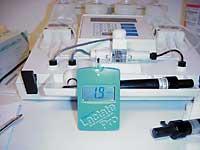

With this it is known to what extent the athlete is giving and what should improve to be able to give more, if he has to give more. With the tests these values are extracted and the trainer is told what type of training suits that person and what type of training is able to support. A couple of months after continuing to train, the test is repeated to see evolution. They have been working on this project for two years.
Based on health
As the engine is the human body in elite sports, in this type of centers are carried out various activities related to the health of athletes: medical histories, low traumatology, stimulation work... in short, monitoring of athletes. In this follow-up blood samples are of great importance, since this way measures are taken such as the administration of vitamins, fats, dietary changes, etc.
Food fluctuations, as seen above, are basic in sport. It analyzes what athletes eat, how they eat and at what time they eat, since many errors are eaten. It is always thought that what you eat is important, but if you do two or three workouts a day, it is more important than what you eat when you eat, if what you eat is not distributed well because problems arise.

When something fails they use ergogenic aids, aids that are within the law. “It is often believed that aids are something very special, but for example, with only water, if given well, results can be improved, even with carbohydrates, vitamins, amino acids, creatine, gin, coffee... These are things that are within the law and that if used with meaning can contribute to improving performance. Does coffee help? Yes, but at night I would not give, because it prevents sleep well and the athlete does not rest properly. So the next day’s workouts aren’t good.”
According to Xabier Leibar, from bad training to good training, often the difference is in three or four small things. In elite sports, the distance between success and failure is measured in percentage, and many small things influence there. “Performance is often said to be a chain with weak link strength. The previous work may be well done, but the day of the contest, a disgust, a catarrillo, a mistake in the material… everything changes. In addition, the difference between athletes is very small. In any sport, if the 30 in the world improves by 2%, it can become the first in the world”.
There is something to investigate
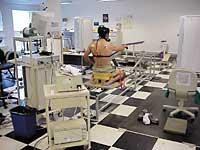
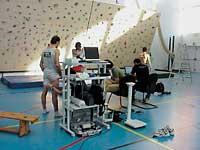
With new sports you work as with classic sports, with more interest perhaps because there can be many new things to analyze. Mountain races can be representative. In this case the project is complete, since the trainings are also prepared at Fadura.
Two years ago they started working with a person sent by the federation. Upon arrival, the individual anaerobic limit exceeded 4 minutes per kilometer, and is currently just over three. “This value, according to Mari Mar García, the technique that carries the project, marks the intensity of the training, is the result of lactate. From there what to train: aerobic resistance, power... The curve is quite stable, but at a given moment it breaks, rises and that is the limit. If you get closer to the maximum, it means that near this limit the training loads are more easily supported. This way, even if the intensity is higher, fatigue is reduced, since lactic acid also accumulates less”.
The athlete has changed training because nothing worked force. His training was to go running on the mountain. “Despite two hours running, if these two hours are not performed at a certain intensity, the improvements are not perceived, but if you train well metabolic improvements are achieved.”
In current workouts they try to improve anaerobic power, along with muscle work. “Changes in mountain marathons have a lot to do, and we have included eccentric work, the hip. Throughout the season we have created the base of strength, working the strength at first and then hypertrophy to gain muscle weight.

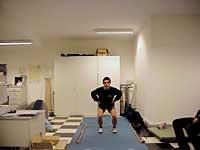
He was also skiing to prepare the season, competing but as training, to take strength and get used to working at height. Then, when the races begin, the strength is maintained and the specific force is worked, changing with slopes, vests loaded… training in some way for the difficulties found in the competitions”.
Although sport is not one of those famous, the training schedule that this athlete carries can help to see the needs of higher education.
During the season there will be between 6 and 7 marathons, so every 4 weeks the training cycle is repeated. Once the test is finished, perform a relaxation: muscle stretching, sauna, hydromassage, electrostimulation, etc. You can start running a few days, if possible on machines to prevent the knees from suffering. After recovery, blood samples are taken, which will have about 10 days to train.
“If I had a test within two weeks, this week I would spend about 2 hours, at different speeds and changing the slopes... something with the competition conditions. By the weekend, Friday, for example, would go to the mountain to run. A first quarter of an hour under the slope to work the back of the leg muscles, then make series of about 20 minutes of ascending and descending tilt. On Saturday, two hours of training, with intermediate series, to maintain anaerobic power and not lose speed. And on Sunday I would train to the rhythm of competition with brief simulations, three 15-minute series to the rhythm of competition and series of recovery, heating, stretching…”

The next week would be to fine-tune a little: recovery, rest, work strength on the mountain and strength on tall appliances to get used to. The eve of the test should look for good sensations, trot, rhythm changes… and the weekend competition.
Autochthonous sports studies
Scientific and research steps are also being taken in sports that cannot yet be considered elites. In the case of fadura, sports stand out here. The ball, the rural sport and the rowing have priority in the center. For example, they are working with sokatira. The project started last year, especially with the technique. Worked rope, maintenance of a rope, creation of a load and a pull.
The ratings have begun and, according to Mar, there are very interesting data. “Sokatira is a very technical sport, even if it seems strong. We are analyzing force in three axes: vertical, horizontal and lateral. We are analyzing the strength of a person on these three axes. From there we draw the relative value, and that is very important, because the weight is very important in the sokatira. With the ergometer and recordings we will also get interesting things out.” The evaluations have been made individually and collectively, since when it comes to strength it is very important to know who are in front and behind.
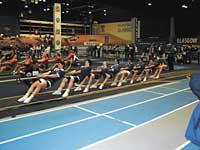
In addition to the projects of a particular sport, research also addresses more specific issues. Jumping capacity is a good example. In many sports jumping is very important. In the Center for Technical Improvement, for example, studies are being carried out with athletes of jump of length and triple jump for its subsequent implantation in the rest of sports. For Xabier Leibar athletics has a great importance, “because many of the things that are done in it, such as speed, endurance, jumping ability, can be used in many sports.” The picaresque may say ignorance, while the force of the weak link of the chain is the one that knows.
Height training for rowers
Face-to-face test. Two rowers, brothers Diego and Javier Agirregomezkorta, conducted a training that simulates the altitude situation. The Agirregomezkorta are currently members of the Euskadi Mobile Chair Rowing Group. They are high level athletes. Diego has already participated in the Olympic Games and Javier is preparing to participate sometime.
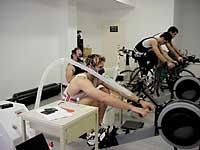
Fifteen days earlier another height training was done. Therefore, the objective of the test was to know if something had changed since then, that is, if they were getting used to working at height. The air they breathed during the test showed an amount of oxygen 2,000 meters high. The test was completed with series of 500 meters, with a higher level of requirement from series to series. That is, they had less and less time to complete the series.
Although the warm-up session was performed by breathing the gym air, oxygen masks were used for the test to breathe air with less oxygen. Before starting the test, doctor Xabier Leibar makes an incision in the earlobe and removes a blood sample. Leibar did the same after each series. “We measure lactate and it is what gives us the degree of intensity” The blood sample is used to obtain instant information about lactic acid, but also to perform deeper studies once saved. The laboratory observes how hormones are, if they have produced more EPO, biochemical analyses are performed, iron level is observed and normal values are analyzed.
All the incidents of the program were controlled at all times by computer: at what pace they went, how much they advanced by the palada, how much they remained, heartbeats, etc. To this information was added the blood sample and the rowers at the end of each series. To explain how they were, they used the Borg scale, and it seemed to them that serial work was very simple, simple, normal, quite hard, hard, etc.
During the session, the rowers marked the entire Borg scale. They left slowly, but the series cost them more work. The instruments and data that reported the behavior of his body indicated this. It ended up exhausted, airy. However, they were able to make a series more than in the test fifteen days before and improve the times. It seems that the body was getting used to working at height.

Workouts that are performed simulating altitude conditions are called hypoxia workouts. The goal of this type of training is to improve oxygen transport and recovery, that is, improve performance. In addition to rowers, they also perform this type of training with track cyclists at the Fadura facilities. Both are sports that require high oxygen consumption and rapid recovery. With this type of testing, in addition to increasing performance, Technical Improvement technicians want to know the evolution of natural EPO in each athlete.
The height test described was the first work of the day for two rowers. Then they went to the gym, first to regain strength and then to work the muscles. By afternoon they planned to go to the estuary. A day later, the two rowers do similar work. 15-16 weekly training sessions. It is an elite sport. In addition to that of rowers, the lives of elite athletes who practice the rest of sports are also related. Work to be done according to the objective.





